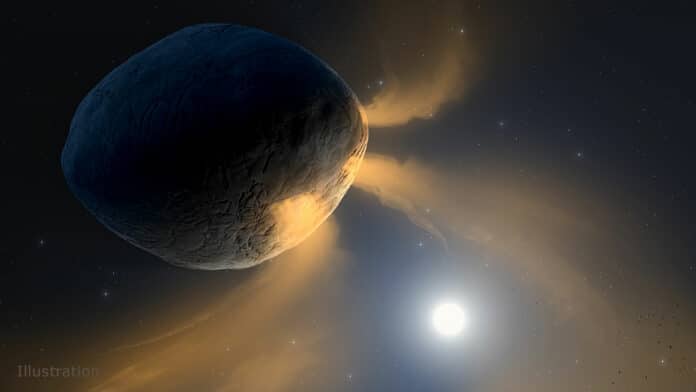Near-Earth asteroid (3200) Phaethon is recognized as the likely parent of the Geminids meteoroid stream. Unlike typical icy, cometary meteoroid progenitors, Phaethon has never been observed to present any measurable dust or gas production near or beyond Earth’s orbit.
Phaethon exhibits a higher albedo, bluer optical and near-infrared colors, and a higher bulk density than typical cometary nuclei. Despite being an asteroid, Phaethon shows comet-le+ike behavior: It brightens and forms a tail near the Sun. It is the source of the annual Geminid meteor shower, even though comets are responsible for most meteor showers.
Phaethon’s comet-like behavior was initially attributed to dust escaping from the asteroid as it gets burnt by the Sun. However, a recent investigation employing two NASA solar observatories revealed that Phaethon’s tail is formed of sodium gas and not at all dust.
The analysis revealed that Phaethon’s comet-like activity could not be explained by dust.
California Institute of Technology Ph.D. student Qicheng Zhang said, “Comets often glow brilliantly by sodium emission when very near the Sun, so we suspected sodium could likewise serve a key role in Phaethon’s brightening.”
The Sun’s high heat during Phaethon’s close solar approaches may indeed cause sodium within the asteroid to vaporize and fuel comet-like activity, according to an earlier study that was based on simulations and laboratory tests.
Zhang searched for the tail once more in 2022, during Phaethon’s most recent perihelion, to learn what the tail is comprised of. He used the NASA and ESA-collaborated Solar and Heliospheric Observatory (SOHO) spacecraft, which contains color filters that can find sodium and dust. The tail was discovered by Zhang’s team in 18 of Phaethon’s close solar encounters between 1997 and 2022 by searching old STEREO and SOHO pictures.
The asteroid’s tail was brightly visible in the sodium detection filter during SOHO observations but not in the dust detection filter. In addition, if Phaethon’s tail were made of sodium, it would have the same shape and brightness as it passed the Sun, but not if it were made of dust.
Team member Karl Battams of the Naval Research Laboratory said, “Not only do we have a cool result that kind of upends 14 years of thinking about a well-scrutinized object, but we also did this using data from two heliophysics spacecraft – SOHO and STEREO – that were not at all intended to study phenomena like this.”
Zhang said, “A lot of those other sunskirting ‘comets’ may also not be ‘comets’ in the usual, icy body sense, but may instead be rocky asteroids like Phaethon heated up by the Sun.”
Journal Reference:
- Qicheng Zhang, Karl Battams et al. Sodium Brightening of (3200) Phaethon near Perihelion. The Planetary Science Journal. DOI 10.3847/PSJ/acc866
